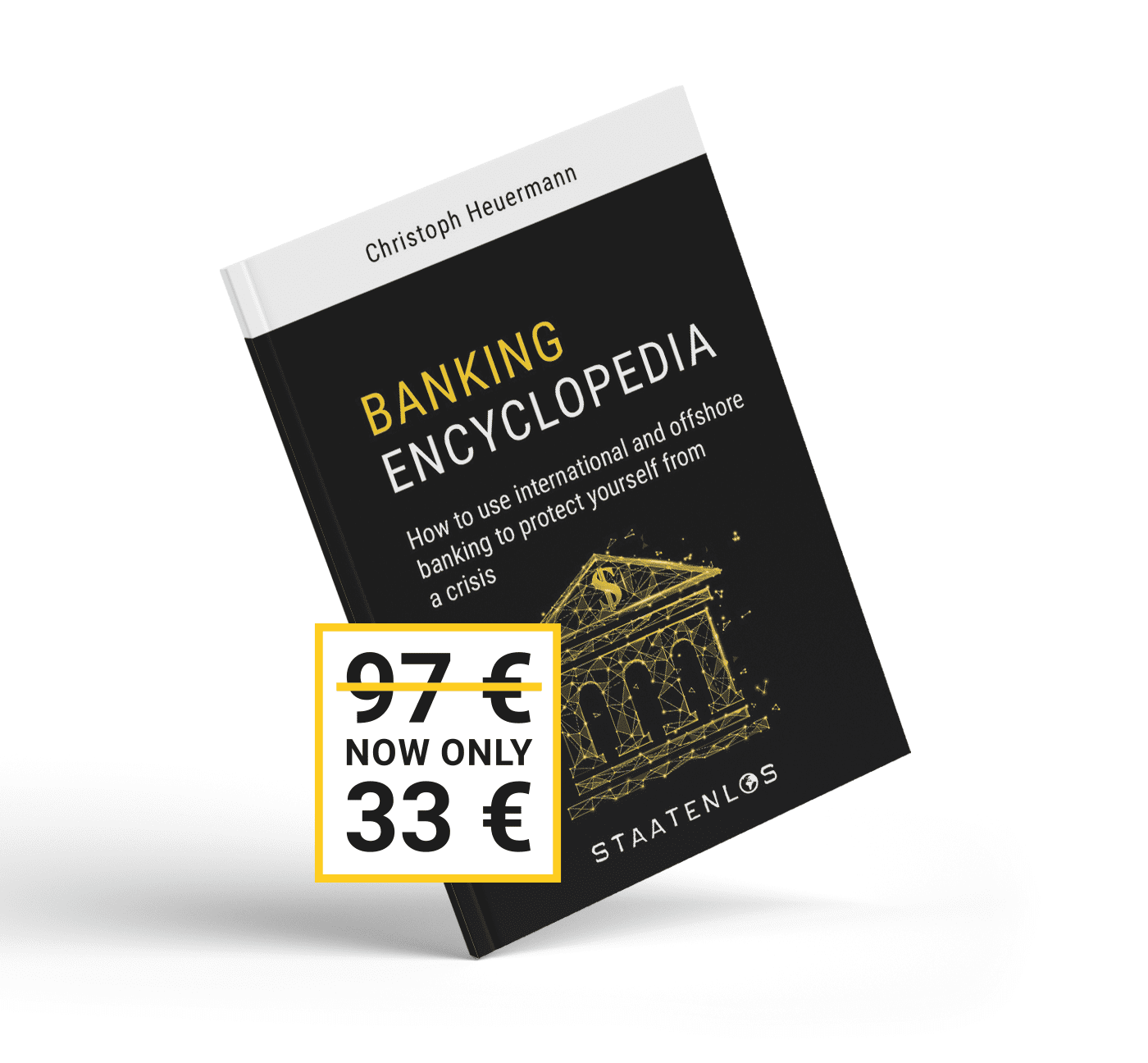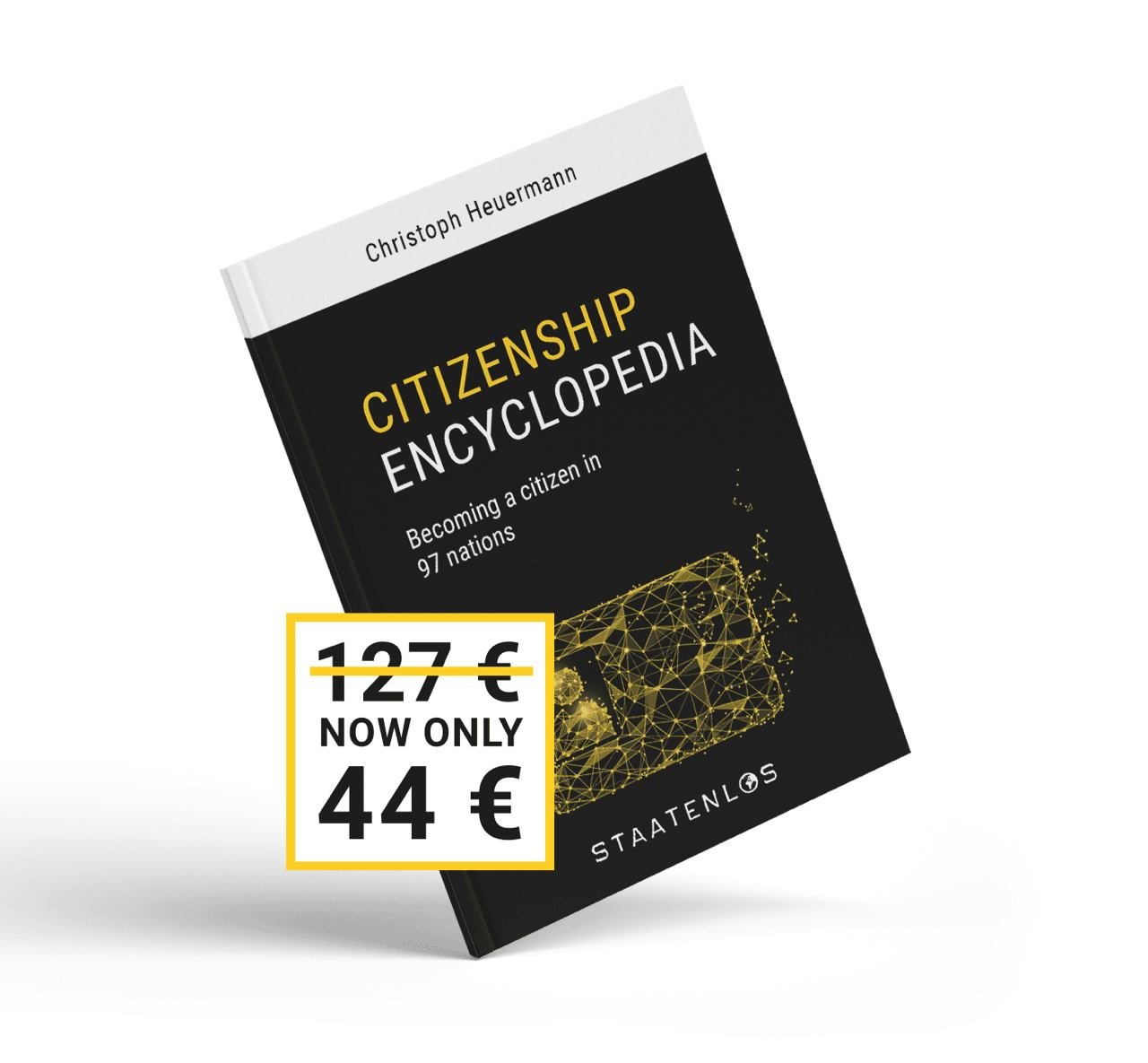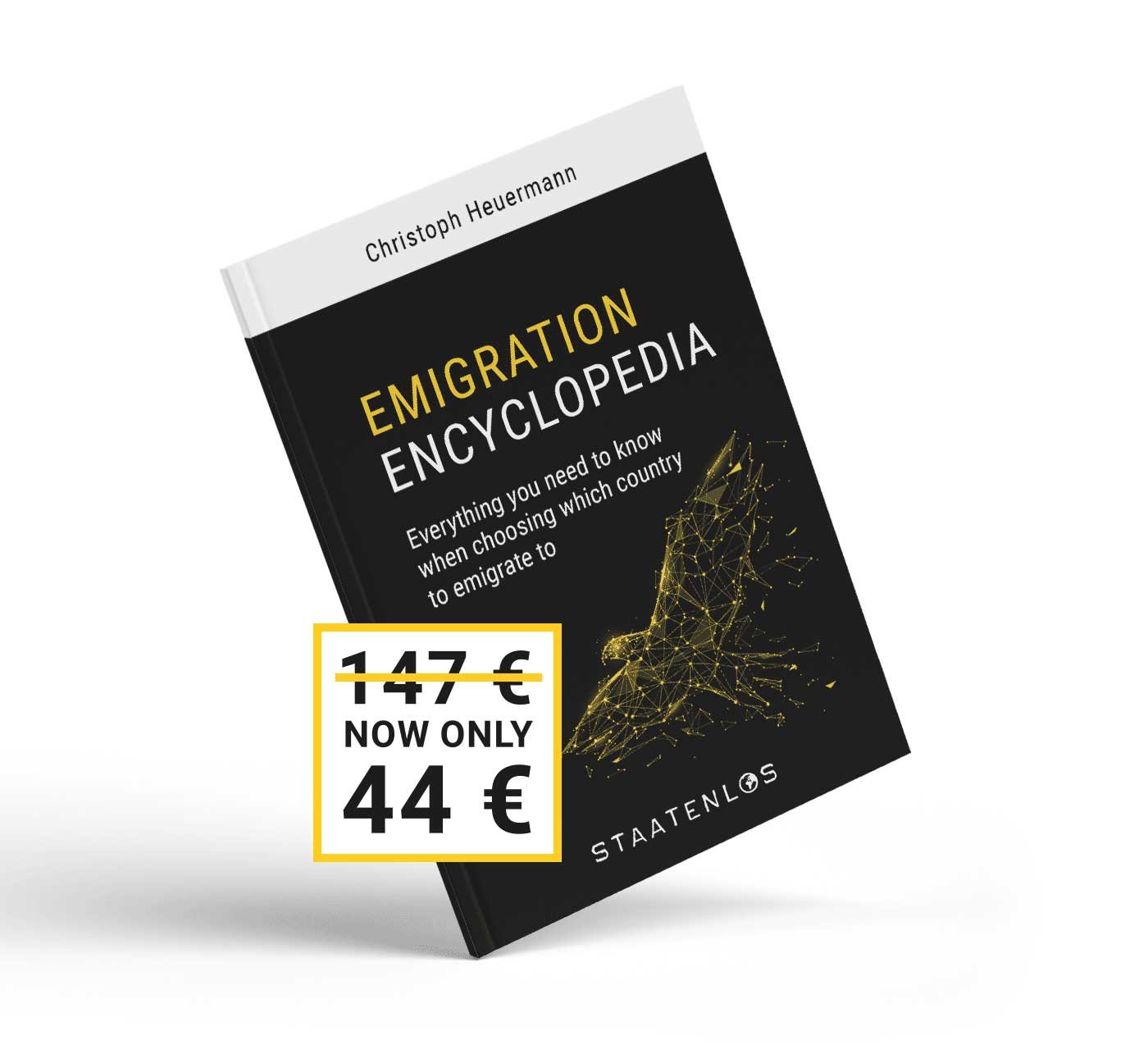In Tax Free Today we’ve already talked about living in various countries, as well as how to terminate your tax residency. However, what was still missing was a general introduction to the different types of immigration.
Today we’re going to rectify this with an article explaining the different options you have when emigrating to any of the many countries in the world.
As we said, there are different categories of visas and residence permits. Depending on your situation, you can enter other countries as an employee, retiree, student, expert in an area requiring professionals in the country, an entrepreneur or even an investor.
In this article we will primarily focus on the immigration options for entrepreneurs and investors looking to establish a legal, tax-free, long term residence wherever they its offered. So let’s get down to the definitions.
Residence in the EU
As an EU citizen, you benefit from the freedom of movement and can generally reside in any EU country. For the self-employed and entrepreneurs, the principle of ‘self-sufficiency’ applies to determine whether or not you can settle in another country.
Practically, this means that, as an EU citizen, you’ll have no problems moving to another country and become a resident there as long as you have a regular income of at least €80 a week (or if you have around €14,000 in your account), are in possession of valid health insurance, and have signed a rental contract for one year.
You’ll usually register as an EU citizen at the town hall or police station of your new place. There’ll be no time-limit to your stay (as long as you have an EU passport), and you can normally obtain nationality after a certain period of time. In the EU, the minimum amount of time before you can obtain citizenship is 6 years, but this figure can sometimes be significantly higher.
Two examples of EU residence could be residence in Cyprus or Malta.
Permanent Residence Permit
The closest thing to residing in another EU country is the permanent residence permit. Permanent residence is a right to permanent and unlimited residence in the country. Generally, you only need to pass through the country once every 2 or 4 years, or visit the nearest embassy and excuse your absence.
This type of residence permit can lead to a new citizenship after a certain number of years.
In some countries, you can obtain permanent residence via certain special programs designed particularly for entrepreneurs or investors. You’ll often have to prove a minimum income or assets and/or make investments of a certain amount.
You can also obtain permanent residence if you’ve been obtaining temporary residence permits for long enough (as discussed below). This can take between 2 to 6 years, depending on the country.
Residences in Panama and Paraguay are good examples of this type of permit.
Temporary Residence Permit
When you go to another country with the intention of living there, you’ll generally be granted a temporary residence permit. With this permit you can live without limitations regarding your activities in the country.
You must spend at least 6 months in the country in order not to lose this permit (in some cases 3 months is enough). In other words, to keep your permit valid, you have to use it.
Depending on the country, this temporary residence can lead to a permanent residence after one or several years of renewal.
An important difference between the residence visas and the temporary residence is that the latter is much easier to renew, and does not have to be applied for again and again.
Many of the visas available to you as an entrepreneur or investor can lead to the possibility of obtaining a temporary residence permit and, eventually, a permanent residence permit.
If you want residence in Chile, you must spend at least 6 months of every 2 consecutive years there, and at least 3 months a year for the first 3 years (fewer if you have $200,000 for a property investment) if you want residence in Costa Rica. Only then will you get your permanent residence permit, which in turn will form the basis for a possible nationalization later on.
You’ll find examples of temporary residence permit in our articles on Costa Rica or Georgia.
Residence visa
In general, the only things you’ll get in Asia are residence visas, a place where, for cultural and ethnic reasons, it’s very hard to obtain a permanent residence visa or citizenship. Residence permits can be valid from a few months to years and are generally renewed after their expiry.
Residence visas do not require a minimum stay and are often a significant source of income to countries that grant them. In addition to visa fees, there are often requirements for foreign exchange contributions to the National Bank, which are only refunded once the country has been completely abandoned.
So, in the Philippines, a deposit of $20,000 will have to be maintained for as long as you want to stay in the country (SRRV Smile Visum).
The examples of residence visas given in this blog are the Thailand Elite program or the residence in the United Arab Emirates free trade zone.
Tourist visa (and visa run)
Some emigrants want to save themselves the bother of the official path and instead stay in the country as tourists for many years. They’re not officially domiciled or registered anywhere, despite spending the whole year in a few countries. However, since the residence permit it limited for most tourists, they use visa runs.
A visa run involves leaving the country for a night to a border town to return the next day and receive a stamp to extend the stay by a few more months. It is a common practice that many emigrants continue to use, especially in Asiatic and Latin American countries.
For a short period of time this can be totally legitimate, in order to decide if the country you’re thinking of staying in really is the country of your dreams, and thus whether it’s worth going taking the official immigration path.
However, it’s often the case that someone is avoiding bureaucracy, or just can’t afford to meet a country’s conditions. But after a while this can be dangerous.
Countries are increasingly problematic about this practice, and can deny visa applications when visa runs are repeated.
You often have to present return tickets on entering the country to prove that you really don’t intend to stay longer than for a short holiday period.
Customs officers scrutinize your passport on entry and calculate how much of the current and previous year you’ve spent there.
Nowadays, the visa run can prove problematic for you in Thailand, Malaysia, Costa Rica and Panama; which is logical, since they’re countries with well-defined immigration programs.
Many countries have switched to limiting the total duration of visas in cases where applicants have not spent at least the same amount of time outside the country.
Brazil, for example, grants a 90-day residence permit to German citizens. This permit can be requested up to twice a year. In this case, starting the New Year in Brazil, the German citizen can enter and leave neighboring countries until the end of March, but will not get 90 full days every time he re-enters Brazil, but only the remaining time of residence.
If he goes to neighboring countries for roughly one month, he can stay in Brazil for a maximum of a month, until the end of April. He must then leave the country for three months, but at the beginning of August can re-enter for another three months.
This type of procedure isn’t a problem if you’re only looking for a tourist stay (which often entails crossing the country’s borders multiple times). However, you will no longer be able to stay in the country by making visa runs.
As an emigrant, you must wherever possible choose to follow the official path for legal stay in the desired country. If this isn’t possible, it’s better to choose another country with rules you can comply with more easily and wait till the requirements of the other country work for you.
Illegal (one-way) immigration
For the sake of completeness, I will here also mention illegal immigration, as we often find it in Europe. Obviously this isn’t advisable, but it may be a good option for people who can’t comply with the official conditions.
In some non-European countries, there are citizens who deliberately choose the illegal immigration path. This works particularly well in the U.S., for example, where illegal immigrants are tolerated (at least until they’re identified).
With official U.S. authorization, known as ESTA, you can enter the U.S. as a tourist relatively easily. Then, if you don’t qualify for an investor or business visa but still want to stay permanently in the country and haven’t been lucky with the green card lottery, you can continue your life in the U.S. as an illegal immigrant.
If you choose to follow this path, you might be left alone, but there are many choices you won’t be able to make, and of course you’ll have to live with the constant fear of being controlled at any moment.
Be that as it may, amnesties are from time to time available for illegal immigrants, and it is also possible to make your residence lawful through so-called anchor babies.
When children are born on U.S. soil, they automatically acquire U.S. citizenship and thus afford their parents some security from being deported.
However, it’s worth noting that illegal immigration (in the U.S. or anywhere) is one-way. Once you’ve entered the country and overstayed your visa, you’re a prisoner there, because you can obviously no longer leave.
While it’s easy to leave and illegally re-enter EU countries with mass migration, thanks to their open borders, leaving the U.S. illegally is extremely complicated, and if you overstay your visa, you may be banned from re-entering the country for several years.
For this reason, illegal immigration in a system with closed borders generally means giving up your global mobility.
Categories of immigration and tax residence
For most Tax Free Today readers, it’s interesting to know how to justify a tax residence. Here we must differentiate between several degrees.
In general, you can be tax-resident in all categories, even with a tourist visa.
Anyone who stays in a country for more than 183 days cannot, logically, have spent more than 183 days per calendar year in any other. This is why many in many countries you’re considered tax-resident on your universal income when this period is exceeded.
Also, property, income, a spouse or other factors can constitute ties. In some countries, you don’t even need to spend half a year there in order to become a tax resident.
For example, in the U.S., you should never stay more than four months in three-year period (Substancial Presence Test) if you want to avoid paying taxes there.
In the UK, you could face taxes after only two months stay there (Statutory Residence Test). In Switzerland it’s three months.
The question of tax certificate is usually cause for confusion. In principle, you don’t need this type of certificate to stop other countries from making you tax-resident.
Tax certificates are only ever issued when you meet the stay of 183 days, as this is the only way to avoid their misuse. Although you need a tax certificate to benefit as a private individual from double taxation agreements, you don’t need it to establish or justify a tax residence.
In this context, reference is often made to the tiebreaker rules.
Obviously, many countries have realized that in a global world there are many people who don’t meet the requirement of a long stay. Therefore, they’ve introduced other criteria for determining tax-residence.
Because there may be conflicts between countries over tax laws, there are ‘tiebreaker’ procedures in double taxation treaties or in the OECD Model Tax Convention to determine final tax residence.
Tie-breaker rules resort to nationality as the last factor in cases where the criteria of residence, principal home or personal and economic interests do not reveal a clear winner.
This is sometimes misinterpreted to mean that it is impossible to not pay taxes anywhere, since even if you have no fixed residence, you do have some nationality and thus your country will always have grounds to tax you.
However, the tiebreaker rule only applies to tax conflicts between states. If you don’t meet the country’s requirements for becoming tax-resident, there’s no need to start the tiebreaker because ultimately you’d have no basis on which to claim tax residence.
It is true that a tax residence can be granted if you the specific requirements defined by the country are met.
So, for examples, you could become tax-resident in Cyprus after having only spent two months there, since a home next to the registration of a business/company and social security payments are already sufficient proof of an establishment.
In the cases where it is not possible to get a tax certificate, residence is usually enough, since it comes with the allocation of a local tax identification number.
What’s more, in countries with a territorial tax system, you can get a tax identification number through investments subject to local taxes. So not only do you get a tax number, but you’ll also get an income tax return, even if you’ve barely been in the country.
The permanent residence permit on its own offers much more legal protection than a tourist visa, since permanent residence presupposes a long stay.
On the other hand, tourists who make visa runs could also end up paying taxes if they exceed 183 days. Many countries, like Columbia, are very vigilant, and tax foreigners who spend more than 183 days a year in the country.
As you can see, in order to justify a tax liability, a list of criteria opposite to the one used to avoid it is generally applied.
You should at least have a permanent residence permit, better still if you’ve established yourself locally and have a property at your disposal, a business, a bank account and/or local social security payments.
As long as you don’t stay too long and you don’t have strong ties in other countries, you don’t need to fulfill the 183-day rule. In other words, you don’t need to spend half the year in any given country, but you do need to be careful not to get too close to 183 days in any country. In these cases, a simple residence permit in Panama or Paraguay is enough.
In order to have a secure tax residence you must therefore obtain a permanent residence permit. If you’re going to be in countries where you can only get residence visas (especially Southeast Asia), you’ll need to be able to prove you have vital interests there: sufficient length of stay, property, economic interests and other aspects.
As we’ve often said, residency is the most important aspect if you want to be rid of the weight of the State and legally avoid paying taxes, so make sure you’re well-informed to avoid problems.
If you’re unsure at all about tax residence or about what you can do to move it to another country, you can book a denationalize.me consultation.
Did you like our blog article?
Support us by purchasing our products and services. Or build up a passive income by recommending us as an affiliate! And don’t forget to check out Christoph’s travel blog christoph.today!
Secret Knowledge Video Course
Learn Everything that You Need to Know for a Life as a Perpetual Traveler
Watch Video CourseEncyclopedia Collection
Acquire Expansive Knowledge about Banking, Companies, Citizenships, and Emigration.
Order eBooks






